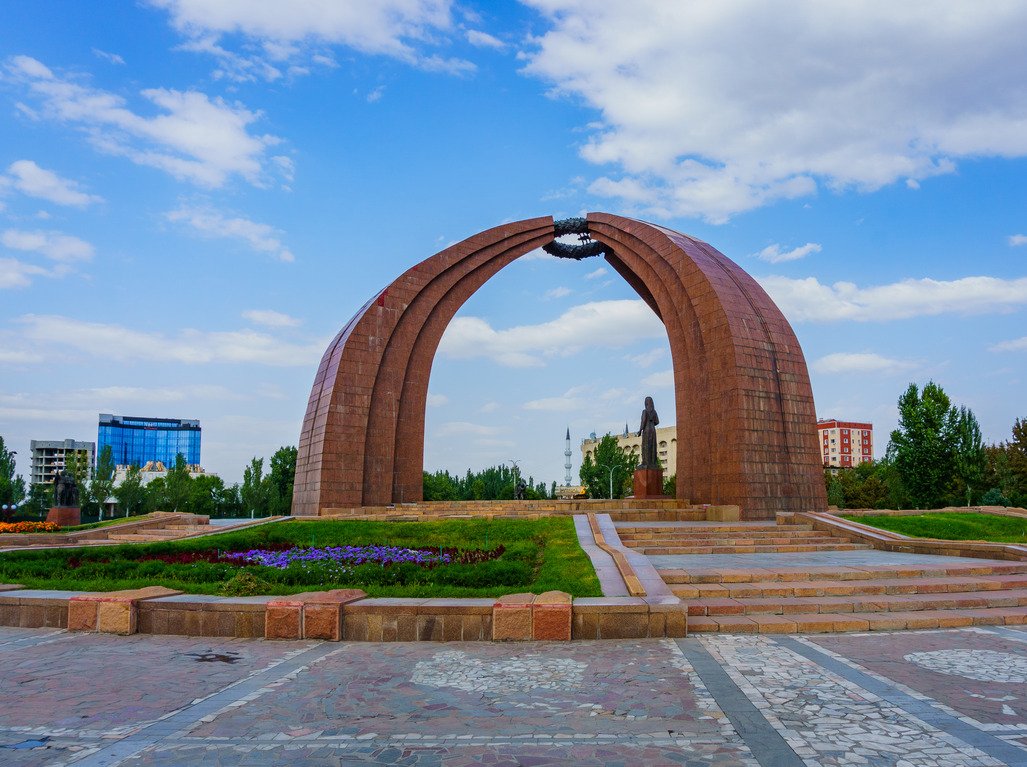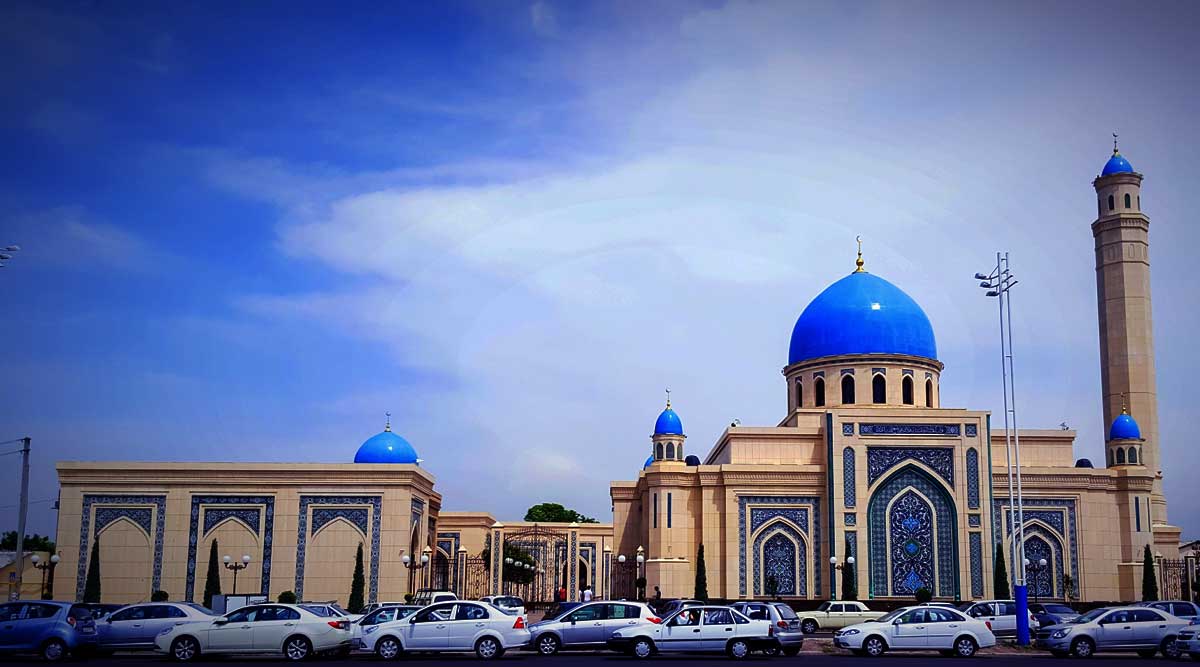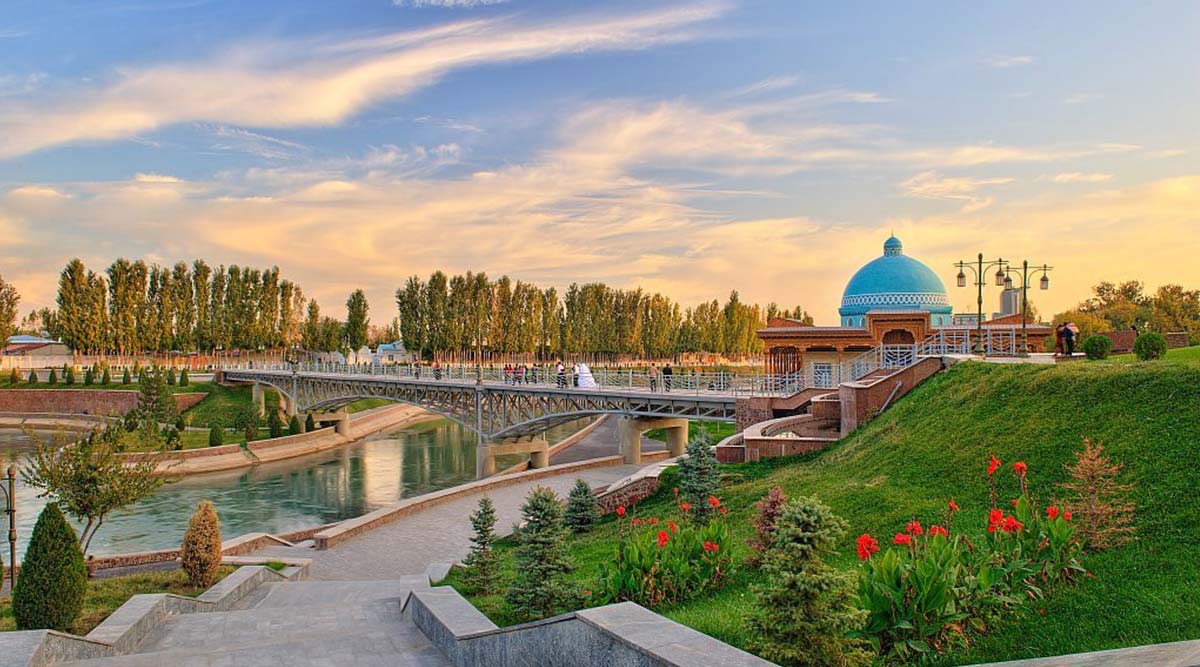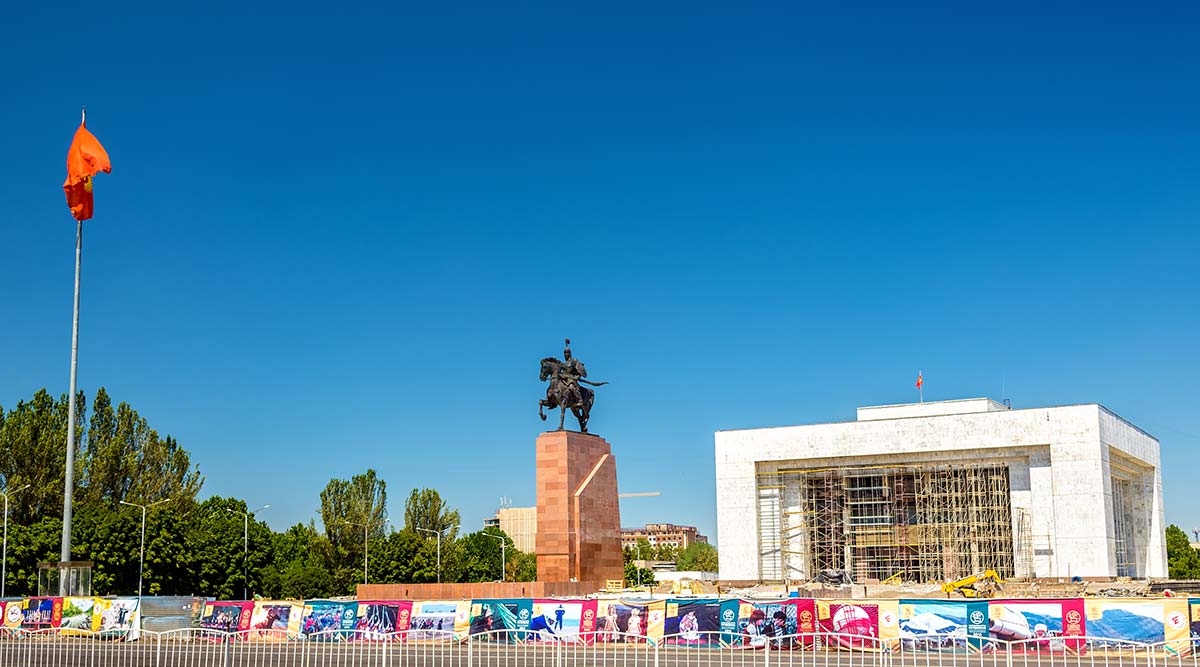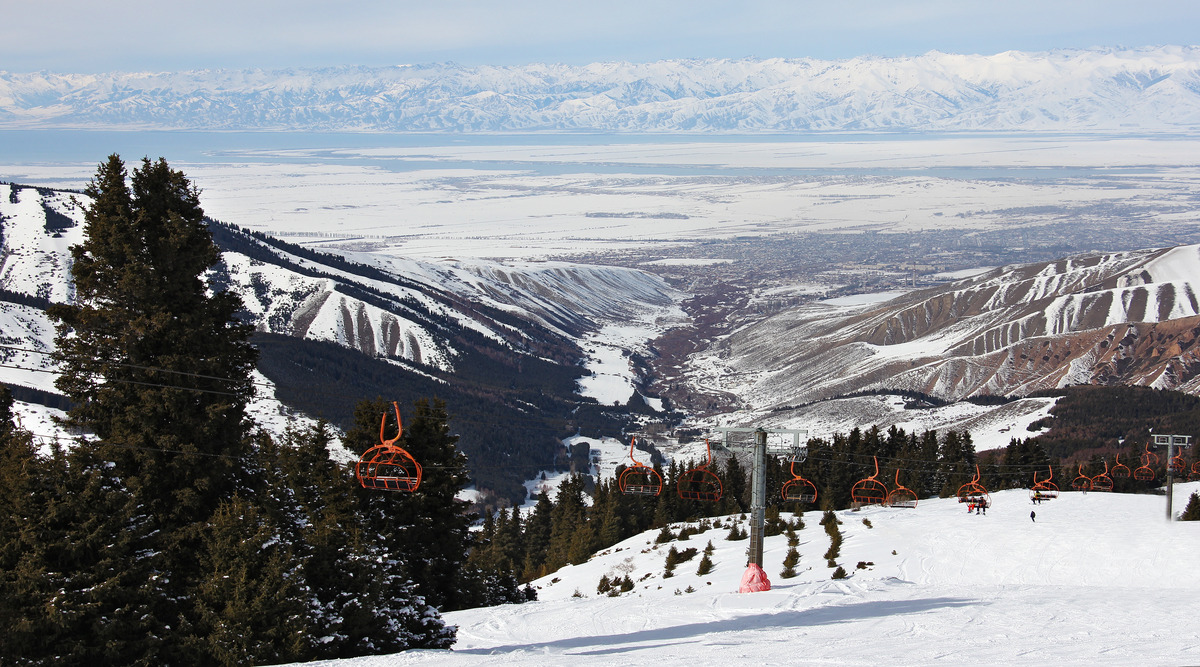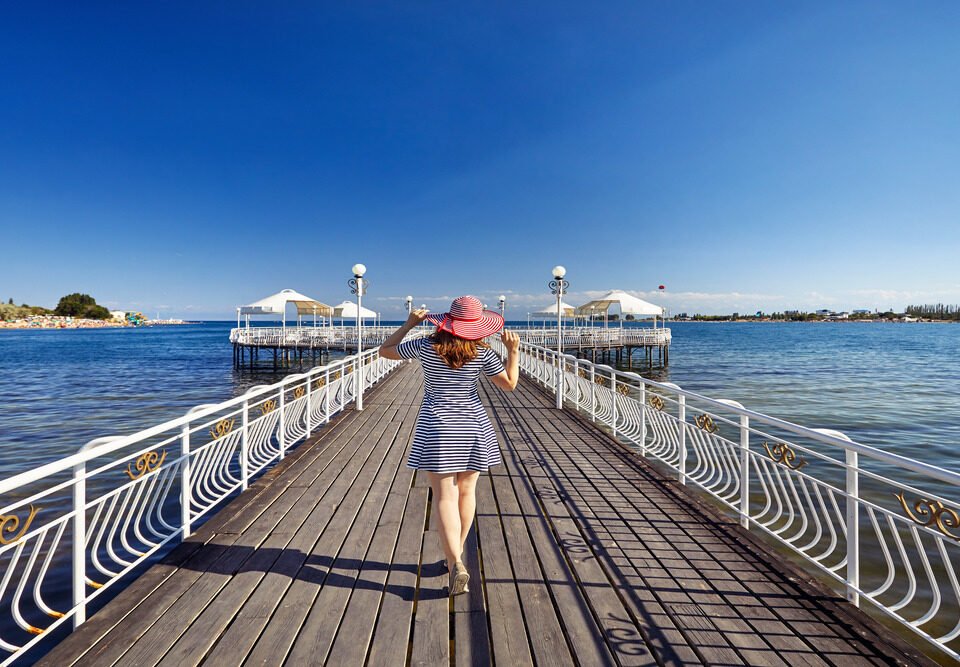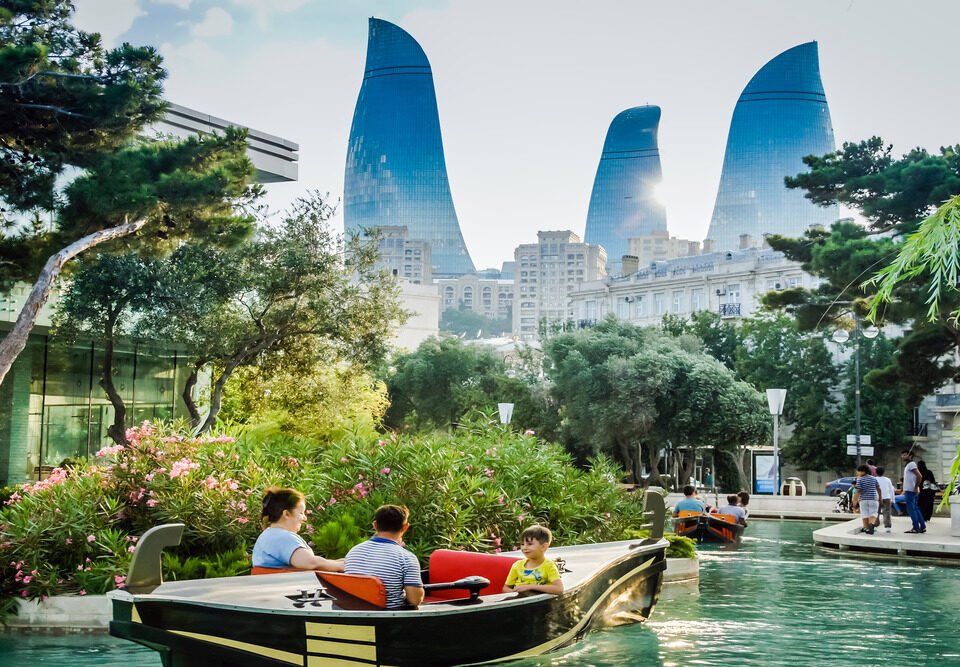Bishkek Packages – Stay Inn Bishkek 4Nights / 5Days
Destination Details
- Flight
- Food
- Visa
- Sight Scene
- Travel Guide
- Transport
Package Overview
Bishkek, the capital of the Republic of Kyrgyzstan, with a population of about 1 million, located in the Chui valley at the northern foot of the Kyrgyz Ala-Too on inclined plains, at an altitude of 700-900 meters above sea level. Its progenitrix was a fortress of Pishpek that appeared in 1925 – a fortification to protect the caravan routes running from Tashkent across the Chui valley to Isyk-Kul Lake.
Travels Mantra is Number 1 Destination Management Company (DMC) for CIS & Eurasia. It has a presence and covered the Bishkek as a travel destination; partners with Kyrgyz National Tourism.
DELHI –BISHKEK
Meet & Greet Service outside of arrival hall, After one Hour transfer to the Bishkek City. Hotel about 35 KM from the Airport.
BISHKEK - ALA ARCHA NATIONAL PARK - BISHKEK
BISHKEK - KASHKA SUU-CITY TOUR
BISHKEK – SHOPPING TOUR
BISHKEK - DELHI
- Economy class return Airfare on Delhi - Bishkek – Delhi
- 4 Nights Accommodation on twin/dbl Sharing basis in Bishkek.
- Smooth Check in hotel on arrival.
- Non alcoholic welcome drink upon arrival.
- English speaking escort guide for the whole tour
- All transfers by comfortable AC tourist transport.
- Sightseeing tour program as per itinerary.
- Kyrgyzstan Visa support (LOI – Letter of Invitation)
- Individual Visa fee on normal process.
- 02 Water bottles of 0.5 Ltr per person per day.
- Meals on FULL BOARD Basis: 04 breakfasts, 04 lunches, 04 Regular Buffet Dinner
- Ala Archa National Park sightseeing.
- Bishkek City & Shopping tour.
- Kashka Suu Ski Resort
- Kashka Suu Cable Car Ride.
- A/C comfortable transport (Luxury coaches) with professional driver per itinerary.
- All taxes
- Charges in hotels for additional services
- Photography and video making fees at the sites.
- Personal insurance
- Tips and gratuities
- Any services not included in the above itinerary
- Entrance ticket to Sites
Travel Guide
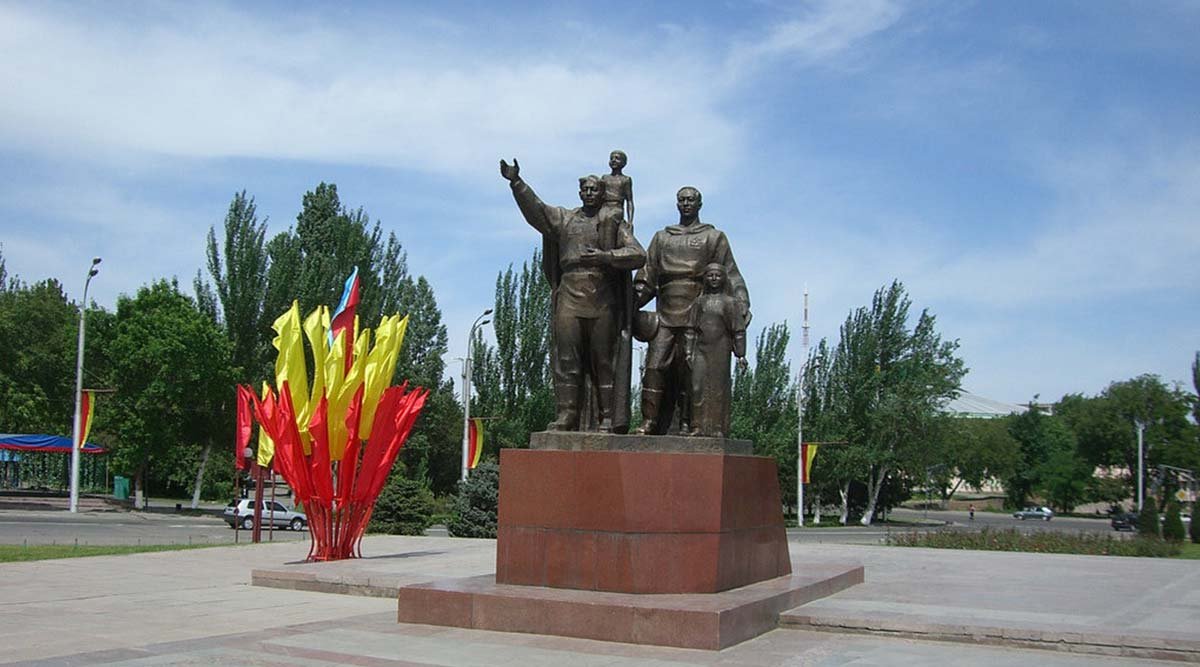
- KYRGYZSTAN
- BISHKEK
- 199,900 KM²
- 5°C, WIND
- MON 12:12 PM
- SOMS
- KYRGYZ
- 5.72 MILLION
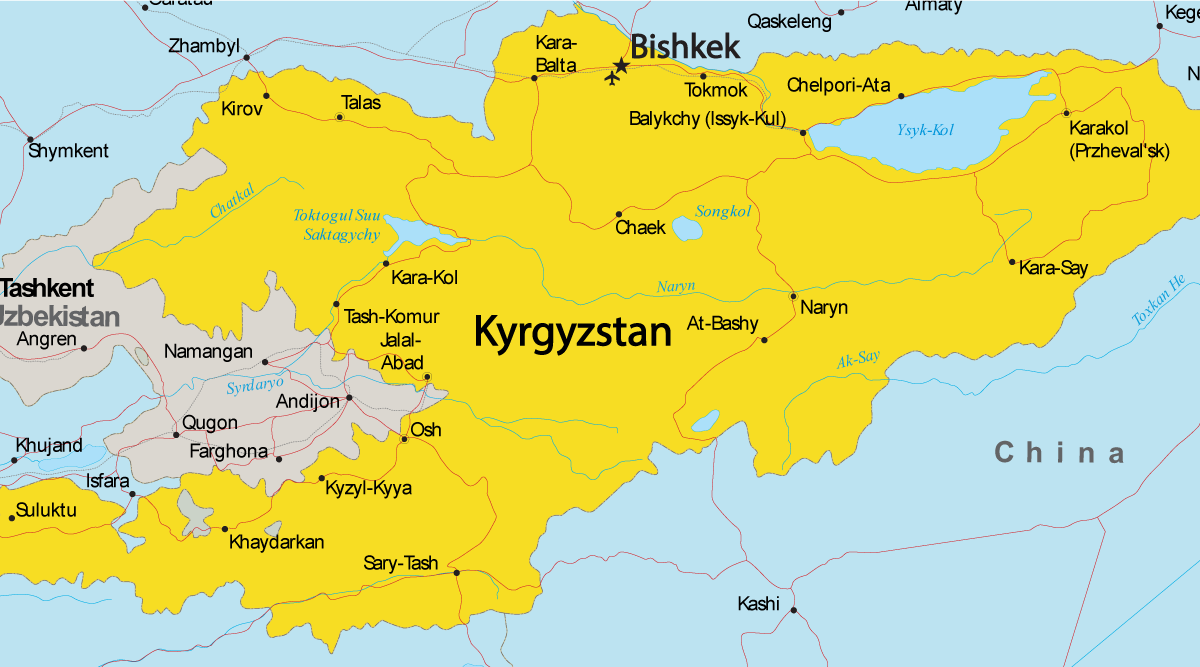
The territory of Central Asia, along with Mesopotamia (modern Iraq and Iran), Egypt, Greece and India is considered one of the oldest centers of civilization. The first people in Kyrgyzstan appeared in the stone age. On Mount Boz-Bormak had traces of the Neanderthals, and the cave carvings of the Ak-Chankur evidence that primitive hunter culture existed 5-10,000 years ago on the shores of Issyk-Kul Lake. In the Iron Age and during the period of antiquity the territories were occupied by nomadic Saka-Scythian tribes, who left behind a tremendous legacy in the form of burial mounds and petroglyphs.
The first state formations emerged on the territory of modern Kyrgyzstan in the 2nd century BC. The Wusun tribes of East Turkestan (Xinjiang Uygur Autonomous Region) moved to the territory of Kyrgyzstan in the 1st century AD. The 5th century BC marked the mass migration of the Ephtalites who formed the vast Central Asian state on the whole space. In the 7th century the territory of Kyrgyzstan became a part of the Western Turkic Khanate, and after its collapse Kyrgyzstan entered the Karluk Khanate.
In the 9th-12th centuries, there existed powerful political union Kyrgyz Khanate in the territory of Southern Siberia, upper reaches of the Irtysh River, East Turkistan, which used to be one of the strongest states in the region until the conquest of Mongols headed by Genghis khan. In 1218 Genghis Khan conquered China, then moved to the state of Khwarazm shakhs, his most powerful enemy. Throughout his journey, he destroyed and ravaged the territory of Central Asia, one of which was the Kyrgyz land.
After the final victory of Genghis Khan, the conquered lands were divided into ulus, headed by his sons. Since then Kyrgyz land and Transoxiana became parts of Chagatai Ulus. After the formation of the Timurid state, the southern part of Kyrgyz lands became part of it, and the northern areas became a homeland of nomadic Kyrgyz. This separation of tribes remained until the colonial expansion of Tsarist Russia. At the beginning of the 19th century Kokand Khans tried to forcedly annex the territory of the Kyrgyz lands, and some leaders of the Kyrgyz tribes appealed to the Imperial Russia government and helped the Tsar's troops during the invasion to the Kokand khanate in exchange for Russian citizenship.
In 1855-1863 the northern territory of Kyrgyzstan was conquered by Chernyaev’s troops and joined the Russian Empire. But not all Kyrgyz tribes were allies of the Russians and in 1876-77 the revolt headed by Pulatkhan broke out, which, despite its scale, ended with the defeat of the rebels. After the conquest of the Kokand Khanate, the southern Kyrgyzstan in 1876 formed the part of the Russian Empire as Semirech’e province.
In the Soviet period, national-territorial demarcation policies resulted in the formation of the first Kara-Kyrgyz Autonomous Region (14 October 1924), which was later transformed into the Kyrgyz Autonomous Soviet Socialist Republic (1 February 1926), and finally the area became known as the Kyrgyz SSR from 5 December 1936 on. In the last years of the Soviet Union, Kyrgyzstan saw the intensification of international conflicts that were fuelled by the failure of the administrative-command system and the subsequent economic crisis. This formed the basis for the conflict in Osh in 1990. The Kyrgyz government decides to secede from the Soviet Union, and in August 1991, Kyrgyzstan has declared its independence, by choosing the path of democratic development.
Bishkek
Bishkek, the capital of the Republic of Kyrgyzstan, with a population of about 1 million, is situated in the north part of the country (Chui-Region). Especially the centre is heavily influenced by the Soviets, and you can enjoy quite a number of typical soviet-style architecture (Philharmonia – concert hall, government building, Historic Museum, Monument for the Great War of the Native Country) but also modern monuments pointing out the traditional Kyrgyz culture (Monument of Manas, Monument of Independence, as well as many statues of Akyns, Manas’chi and local governors of different periods).
Issyk kul
Issyk-Kul is Kyrgyzstan's largest lake and at about 180 km long by 70 km wide and 668 meters deep at the deepest point, (the average depth is about 300 meters), it is the world's second largest mountain lake – and the fifth deepest lake in the world. The lake has been held in high regard by the Kyrgyz – it is known as the “pearl of the Tien Shan ” – and in 2004, the government declared the lake as the “property of the nation”. One source even suggests that, at one time, it was even forbidden to swim in the lake.
Kara Kol
The town itself contains little of interest for a visitor, except a very pretty wooden mosque built by Chinese artisans for the local Dungans between 1907 and 1910 entirely without metal nails and a similarly appealing wooden Russian Orthodox church, the Holy Trinity Cathedral, completed in 1895, used as a club during Soviet times, but now being restored and in use again. The Regional Museum has exhibits on the Issyk-Kul petroglyphs and Scythian bronze artefacts. There also is a small section of Russian colonial "gingerbread" style residential buildings. The town is, however, a good starting point for excellent hiking, trekking and skiing in the Tian Shan. Przhevalsky's grave, a memorial park and a small museum dedicated to his and other Russian explorations in Central Asia are about 5 km from Karakul at Pristan Przhevalsky, overlooking an inlet of Lake Issyk-Kul where the former Soviet torpedo testing facilities were located.
Song Kol
Song Köl (also Son Kul, Songköl, Kyrgyz: literally “following lake”) is an alpine lake in northern Naryn Province, Kyrgyzstan. It is the second largest lake in Kyrgyzstan (18x29km wide, 13 meters deep) after Issyk Kul Lake. Its name, meaning “following lake”, is popularly considered to refer to this relation. It is surrounded by a broad summer pasture and then mountains. Its beauty is greatly praised, but it is rather inaccessible. The best approach seems to be the 85 km road from Sary-Bulak on the main north-south highway. Other routes require 4x4s. There are no facilities on the lake, but local herders will provide supplies and rent yurts. The area is inhabited and safely accessible only from June to September.

People Of Kyrgyzstan
The Kirghizs are a people of Turkic origin, which today constitutes the main proportion of the population in Kyrgyzstan - 69,9% (2230 thousand people). In addition, the Kirghizs live in Uzbekistan, Tajikistan, Kazakhstan, Russia, Sinkiang, Mongolia, Afghanistan and Pakistan. The total number of the Kirghizs worldwide is more than 2,5 million people. The first record of this ancient ethnos is found in Chinese chronicles of the 201 BC. However, as the unit the Kirghizs people finally took shape at the end of the XV-XVI centuries. Historically, it is assumed that significant part in the formation of the Kirghiz as an ethnos played Yenisei Kirghiz, settled in the IX-X centuries on the Tien-Shan. There are different versions explaining the meaning of the word "Kirghiz". The most common interpretation is the literal translation of the words "Kirk Kiz" which means "forty girls". According to another version, the word "Kirghiz" means wandering through the fields or a tramp, which is obviously connected with the nomadic style of life. However, according to some scientists ethnonym "Kirghiz" derives from the words not of turkic origin "kyryg" which means "red" or "a red people", linking, so the word "Kirgiz" with the external appearance of the inhabitants, the ancient Kyrgyz, description of which is found in various historical sources. Kirghiz traditional occupation for many centuries has been nomadic cattle breeding. Nomads, crossed with cattle from one pasture to another seasonal pasture, in winter in the valleys, in summer in the mountains. Nomads were living in a total harmony with the nature, did not build cities and roads, and did not develop the industry.
Scientific and technological progress was almost absent and life has not undergone significant changes over thousands of years (calendar was also absent as unnecessary). As a result of this way of life among the Kirghiz formed a certain national character features. Classic Kirghiz is unhurried and unconcerned, it is inherent in traditional Asian slowness. He likes to leisurely drink tea, talk about that and this. However, some of the best national qualities, such as traditional oriental hospitality are inherent in the Kirgiz people as well. According to the customs of the nomads, any traveler, even a complete stranger is your guest. Guest should feel comfortable, and you cannot refuse anything to him. People say that before it was customary even if the casual visitor praises something at your house you have to give it to him as a present. In addition, another wise tradition survived among the Kirghizs: respect for elders. Older people are highly respected and are taken care of until their death. After the elder people usually look the youngest son in the family, who inherits their property. Family relationships among the Kirghizs are slightly different from the European ones. Even second relatives are considered as close ones. It is customary not only maintain contact with them, but also actively help each other, participate in important family events. Definite habitat, climate conditions and way of life also had a great influence on the appearance of the Turkic people. They are notable for the mongoloid type of face, short stature, dark, straight and stiff hairs. Yellow complexion, narrow shape of eyes. Brown eye color is very common among the Kirghizs, but occasionally you can also see blue-eyed and red-haired representatives of this ethnic group.
When to go
ocean and is located in the heart of the continent, surrounded by mountains. The climate of Kyrgyzstan is distinguished by low rainfall and plenty of sunshine, so that we can guarantee a pleasant stay for months, starting from spring to late autumn. There are a lot of mountain landscapes in Kyrgyzstan. The mountains have a direct impact on the atmosphere. On the mountain heights the precipitation rate is greater than on the plains, and the climate is colder. Basically, humidity and clouds in Kyrgyzstan are a consequence of the movement of large air masses from the west. West winds bring with them heavy rains, storms and snowfalls. In winter, the climate of Kyrgyzstan is influenced by the arctic winds of Siberia and the Arctic Ocean. Most often, this leads to the precipitation and snowfall. In such weather there are frequent fogs and drizzling rains, a consequence of the collision wet and cold air masses. The climate in Kyrgyzstan can be attributed to the continental, and sometimes a sharp-continental, which leads to a spring snowfall, and even frost. Like other Central Asian countries with similar climate, agriculture in Kyrgyzstan often suffers from sudden precipitation. If the north of Kyrgyzstan is influenced by arctic winds, the south is exposed to the south-western cyclones coming from the Mediterranean Sea, which results in sharp warming and precipitation, while the climate is close to the tropical. A characteristic feature of Kyrgyzstan is a change of almost all thermal zones, so you can enjoy a variety of flora and fauna of Kyrgyzstan. Spring in Kyrgyzstan is short. It starts sometime in late February and in May the weather is close to the summer average.
Summer lasts from May to September, the highest temperature is +44 C°. But at high altitudes the air is cooler and the nights can be even cold. In Kyrgyzstan, as in other Central Asian countries, autumn comes late. A decrease in temperature is observed at the end of September, and autumn weather can last until December. Winter in Kyrgyzstan differs depending on the terrain. For example, in the south of Kyrgyzstan, a relatively warm winter and the temperature does not reach the mark of -2 C°, but the northern regions have a very severe winter with an average temperature here reaching -27 C°. There have been cases in history when the temperature in the north of Kyrgyzstan reached -50 C°. Climate and weather in Kyrgyzstan are volatile, and atmospheric precipitation is uneven. On the western slopes of the mountain ranges of the precipitation rate is higher, while the other side of them sees twice less rainfalls. Most precipitation falls in spring, in March and April. All these peculiarities make Kyrgyzstan a unique place for recreation and travel.
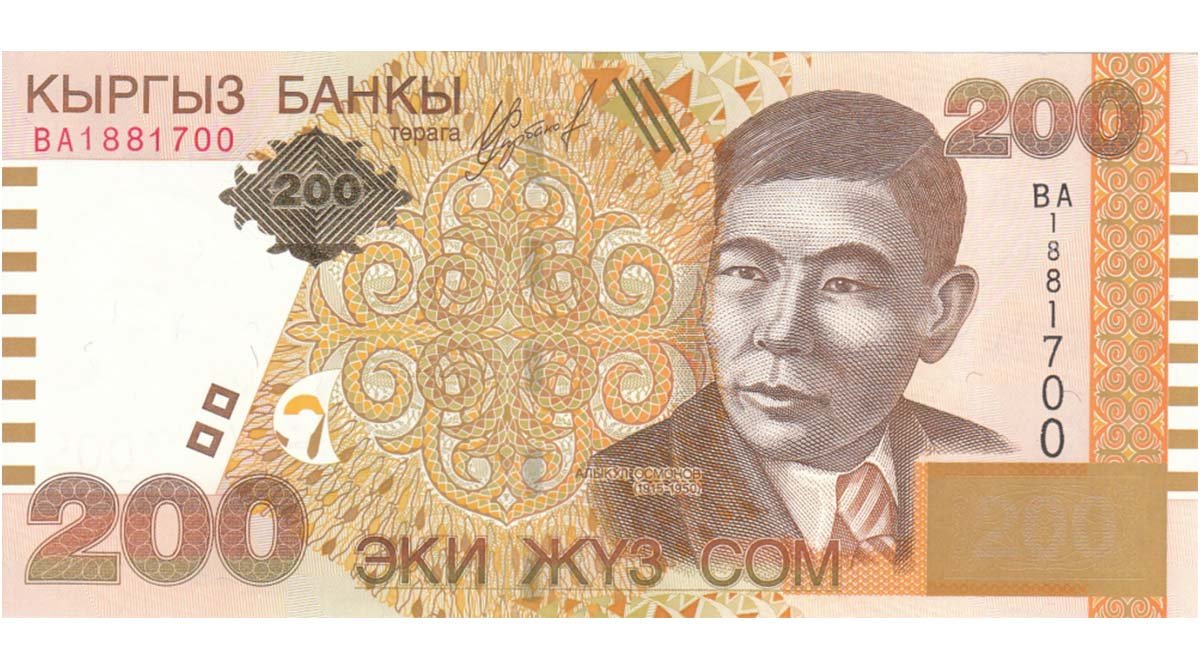
Som is a national currency of Kyrgyzstan. One som is equal to 100 tyiyn. The Resolution on introduction of national currency som was adopted by the Parliament of Kyrgyzstan on 10 May 1993. International designation - KGS. The first emission of the banknotes in denominations of 1, 5 and 20 soms as well as subunits in denominations of 1,10 and 50 tyiyns was issued by the Bank of Kyrgyzstan in summer 1993. Currently som is represented by nine denominations of banknotes: 1, 5, 10, 20, 50, 100, 200, 500 and 1000, all of them differ in colour and decorated with the images of outstanding art workers of Kyrgyzstan. The subunits, tyiyns, initially had a form of square banknotes and were represented in three denominations: 1, 10 and 50 tyiyns. However, presently, the banknotes in denomination of 1 tyiyn are not used even by banks and state organizations in Kyrgyzstan. The banknotes of 10 tyiyns are also randomly used. January 2008 marked the first emission of coins in denomination of 10 and 50 tyiyns, 1,3 and 5 soms. Recently a banknote in denomination of 5,000 soms was also issued. Kyrgyzstan is the first CIS country (except for Russia) to introduce its own currency in the monetary circulation. Initially, one som was equal to 0.25 USD, however the inflation gradually reduced the cost of the currency.
Today 1USD is approximately equal to 44 soms. Som is the only legal currency in the territory of Kyrgyzstan, however one can pay (and sometimes asked) in Russia's roubles, U.S. dollars or Euros in the hotels or for mountain climbing. Normally, banks are open from 9.00-9.30 to 17.00-17.30, Monday to Friday, except on weekends - Saturdays and Sundays. The currency can be exchanged in the banks or exchange offices (usually they work 24/7) and in many shops. You can exchange USD, Euro, UK pounds, Russian roubles, Kazakh tenge, Uzbek soums, the Chinese yuan and other types of currencies. It is recommended to exchange the currency in the capital – the exchange rate in the countryside is much lower. It is advised to exchange USD in newly issued banknotes since the exchange rate for earlier emissions is significantly lower even in state institutions. Som is a national currency of Kyrgyzstan. Currently som is represented by nine denominations of banknotes: 1, 5, 10, 20, 50, 100, 200, 500 and 1000, all of them differ in colour. Today 1USD is approximately equal to 47 soms. Som is the only legal currency in the territory of Kyrgyzstan.

Nighlife Of Kyrgyzstan
Bishkek has by far the best nightlife in the country. Both Russian and European operas and ballets are performed at the State Opera and Ballet Theatre. The Russian Drama Theatre has Russian-language productions, while the State Academic Drama Theatre stages work in the Kyrgyz language. The State Philharmonic hosts classical music concerts as well as pop and folklore events. Bishkek also has many discos and nightclubs. These are best approached with caution as drunken attacks on foreigners are not unheard of. Elsewhere in the country, things are very quiet at night, although some restaurants turn into dancehalls in places like Karakol or Naryn after nightfall.
Night Clubs & Bars
Apple (28, Manas) Fat, old, lecherous foreigners not welcome, this place is for a younger cooler crowd. Multiple bars, large dance floor, friendly atmosphere. Thursday usually a big night. (Entrance charge 100-300 som).
Coco Cabana (32, Chui)
www.coco.kg Coco Cabana is a new and trendy lounge bar/disco that describes itself as having: "Fascinating sound and light, trendy mixes, incendiary Go-Go girls, spectacular dance shows and, of course, the most positive atmosphere for communication!" Definitely worth a try. (Entrance charge 300-500 som).
Pharaoh (East side of the Philharmonic building)
An underground lair packed with eyecatching nods to Ancient Egypt. Foreigners can sometimes negotiate a cheaper or free entry, but be prepared for the big sting inside - beer costs the best part of 200 som. (Entrance charge variable, free-500 som).
Fire & Ice (Chui/Erkindik)
Joy of joys, after a several month refurbishment Fire and Ice has reopened. Reports anybody? (Entrance charge ?).
Heaven (Frunze/Pravda - in the Hotel Dostuk)
As Heaven is found inside a hotel it is suprisingly unseedy. In fact it stands out for being a bastion of the well-dressed (if one is generous). Turn up in tatty jeans and a t-shirt and one may feel a little out of place; then again, one may not give a shit. Tables by the dancefloor cost 1000 som but include drinks up to this value. (Entrance charge 300-500 som).
Golden Bull (Chui/Togolok Moldo)
Tel. 620131 A Bishkek institution. Full of ex-pats and tourists literally every night of the week. Long bar, friendly staff, cheapish beer, everyone’s happy. (Entrance charge 500)
Gloss (Nextdoor to Retro Metro on Mira/Gorky)
Lounge bar/nightclub next door to Retro Metro.
Gvozd (Western side of the Philharmonia at Prospekt Chui 253)
Foreigners for free, urban grooves and acceptable prices at the bar. 'Gvozd' means nail in Russian, but you've probably got a better chance at the Golden Bull. It's almost like the crowd from Pharaoh have migrated.
Platinum (Behind Dvorets Sporta near Chui/Togolok Moldo)
Upmarket club with two rooms, one with the dance floor, one with a large bar. The crowd tends to be more Kyrgyz with far fewer foreigners than clubs such as the Golden Bull. Definitely a place for dressing your best, be careful not to tread on anyone's ego. (Entrance charge varies: approx. 300 for girls 500 for boys).
Retro Metro (24, Mira)
Bright, happy, 80’s kitsch bar, the DJ spins his records from inside the front of a VW camper van. One of the most popular places for post-2am partying. (Entrance charge: 200/300 som midweek, 350/450 som Fri/Sat. Reservation price 200 som).
Arbat (9, Karl Marks)
Tel. 512094; 512087 Smart ‘elite’ club popular with a slightly older crowd. Strip bar and restaurant in same building. (Entrance charge 200/350 som midweek, 350/450 som Fri/Sat. Strip bar 700 som).
City Club (85/1, Zhukeyeva-Pudovkina)
Tel. 511513; 510581 So exclusive it makes the Spektator crowd feel like cheap scum bags, City Club is one of the poshest clubs in town. Get past the ‘face control’ (ugly people beware) and spend your evening with gangster types, lecherous diplomats, Kazakh businessmen and a posse of young rich kids who all seem to have studied in London. (Entrance charge: girls 200/boys 300, Fri/Sat girls 300/boys 500).
Promzona (16, Cholpon-Atinskaya)
www.promzona.kg Promzona’s far-flung location sadly means a taxi ride or a long walk home are in order at the end of a night. Nevertheless, this trendy live music venue has a lot going for it: good bands, an extensive menu, and a hip industrial interior featuring, strangely, a wind tunnel fan, make this one of the best nights out in Bishkek. Tuesday is Jazz night. Rock or blues bands normally play at the weekends. (Music charge 200-350 som).
Promzona (16, Cholpon-Atinskaya)
www.promzona.kg Promzona’s far-flung location sadly means a taxi ride or a long walk home are in order at the end of a night. Nevertheless, this trendy live music venue has a lot going for it: good bands, an extensive menu, and a hip industrial interior featuring, strangely, a wind tunnel fan, make this one of the best nights out in Bishkek. Tuesday is Jazz night. Rock or blues bands normally play at the weekends. (Music charge 200-350 som).
Sweet 60s (Kievskaya/Molodaya Gvardia)
Live cover bands play most nights. Full menu, popular with a younger crowd.
Esco-bar (Gorkova, 200m east of Tash Rabat shopping centre near the Zhukeyeva-Pudovkina/Gorkova crossing)
Named after the infamous Colombian cocaine baron, staff are unlikely to bash a line out for you on arrival. What you will get is decent tunes most nights in a 'pre-party' spot brought to you by the creators of 'Veranda'.
Zeppelin (43, Chui)
Zeppelin is in the same vein as the old Tequila Blues but not quite so spit and sawdust. On the nights we’ve visited, there’s been a line up of young rock or punk bands strutting their stuff, heavier beats seem to go down best with the young Russian crowd. Full restaurant menu. (Entrance charge 100-150 som).
Language Of Kyrgyzstan
Kyrgyz is the official language of Kyrgyzstan. Until 1926, the Kyrgyz and Kazakh languages were not officially recognized as two distinct languages. Kyrgyz orthography was formally organized in 1923 and was modeled after the northern dialects using Arabic script. Afterwards, Roman letters were used until 1940, when the Cyrillic alphabet was mandated by the Soviet government, with three special additional characters. Since independence, there has been discussion about switching back to the Roman alphabet. Although the Kyrgyz language is the traditional language, most of Kyrgyzstan's population also speaks Russian, the language of business and commerce. In March 1996, the Kyrgyzstani legislature amended the constitution to make Russian an official language, along with Kyrgyz, in territories and work places where Russian-speaking citizens predominate.
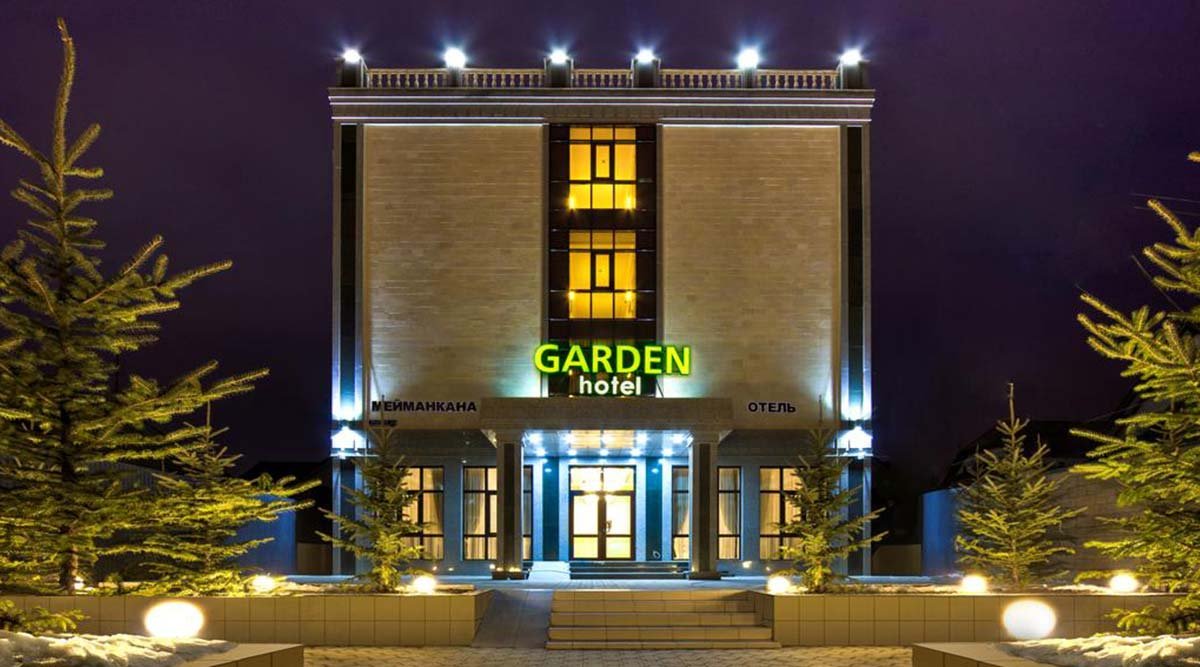
Hotel Garden
KYRGYZSTAN
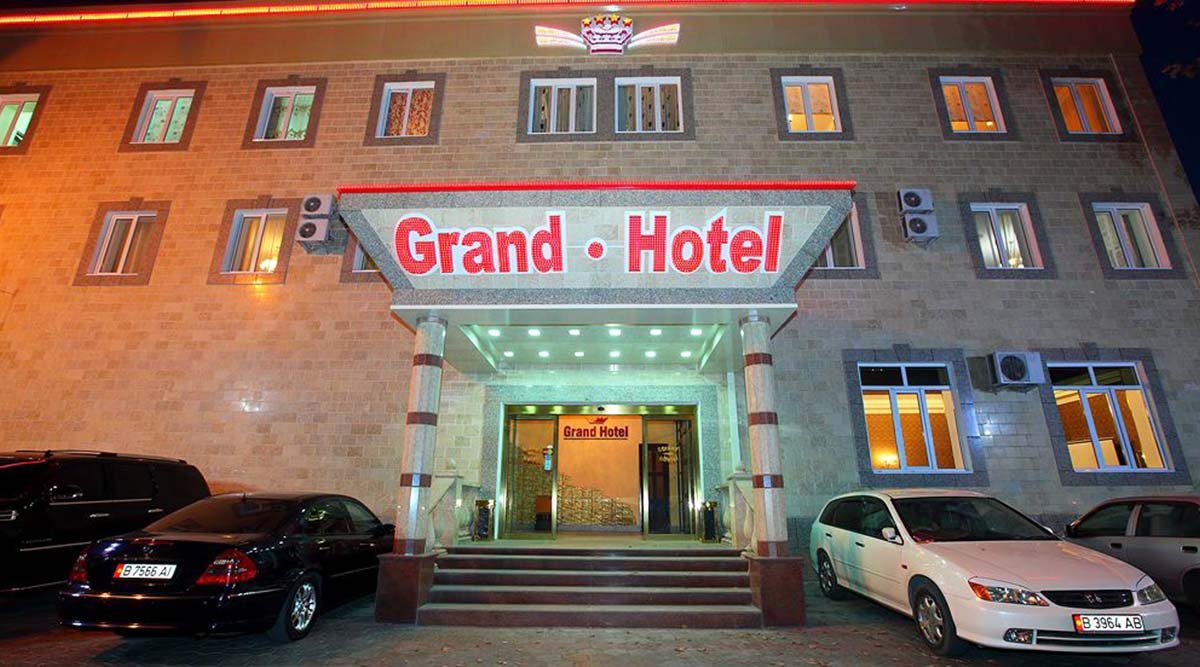
Grand Hotel
KYRGYZSTAN
Bishkek,Kyrgyzstan











